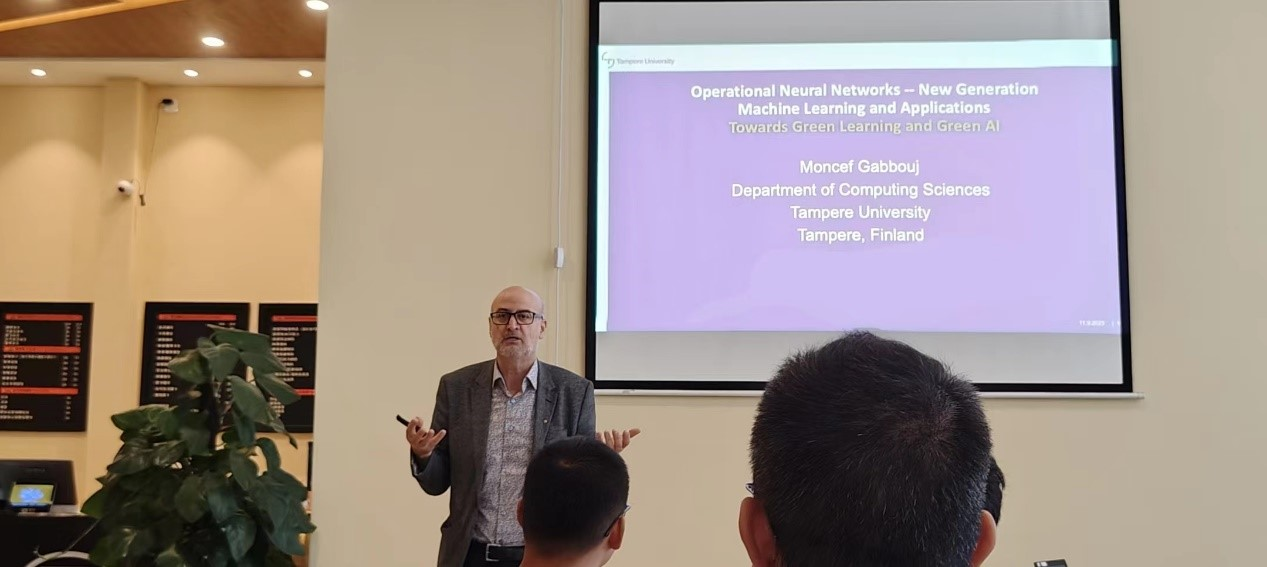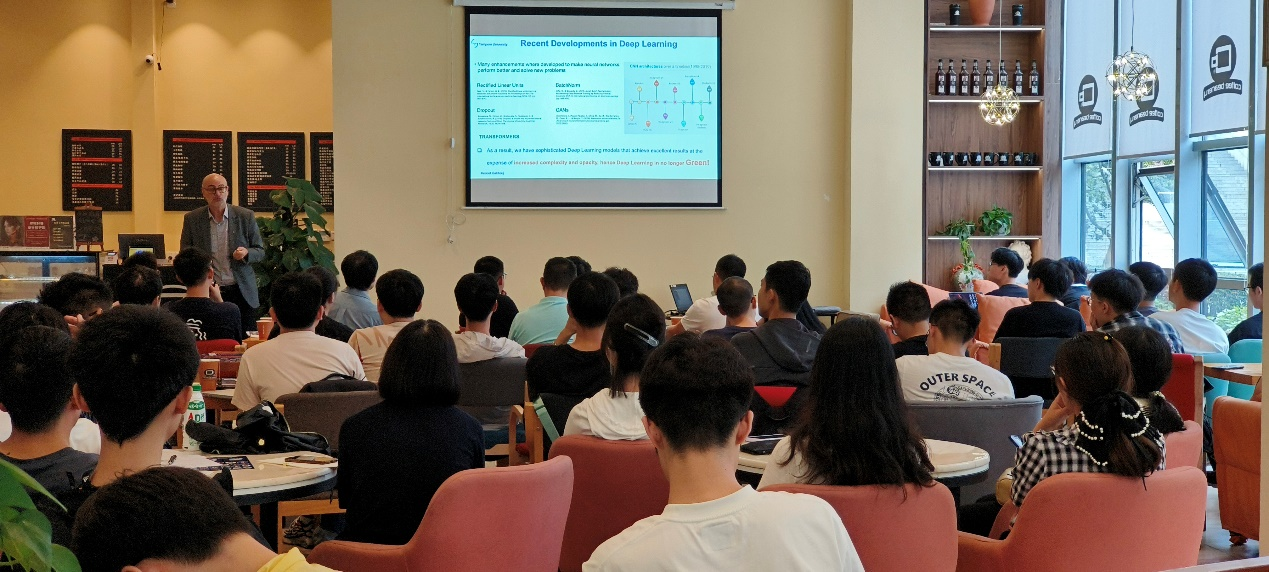On September 11th, the "Masters Lecture", organized by the Teacher Development Center and sponsored by the School of Information and Communication Engineering, hostedProfessor MONCEFGABBOUJ from Tampere University of Technology, Finland to deliver an exciting academic lecture titled"Operational Neural Networks -- New Generation Machine Learning and Applications". Faculty members and students participated in the lecture and engaged in interactive discussions.Thelecturewas moderated by Professor BingZENG.
Professor MONCEF GABBOUJ provided an overview of the history of artificial intelligence and artificial neural networks (ANN), emphasizing that artificial intelligence and machine learning are subsets of artificial neural networks, which serve as the foundation of artificial intelligence. Using ChatGPT-4 as an example, he introduced the main components of artificial intelligence systems, including machine learning, natural language processing, computer vision, soft computing, robotics, self-awareness, and more. These components enable machines to learn, understand, and interact with the surrounding world in ways previously unachievable.

After introducing the basic concepts of artificial intelligence and machine learning, Professor MONCEF GABBOUJ discussed several newer network models such as CNN, Self-ONN, GAN, and posed a thought-provoking question: Can we do better than the early Perceptron Model, a pioneering artificial neural network model proposed by Frank Rosenblatt in 1957? He categorized the advancements from 19 years ago to the present into 1g, 2g, and 3g, showcasing the functionalities of different networks in denoising, image fusion, and other tasks. By presenting images and metrics before and after processing, he allowed students to experience the performance and focus of different networks. In a humorous demonstration of image fusion, Professor MONCEF GABBOUJ showcased the effect of merging his own image with the classic Lena image, highlighting the image fusion capabilities of different networks.
As the lecture approached its conclusion, Professor MONCEF GABBOUJ shared viewpoints and conclusions. He pointed out that the ancient neuron model from 1943 is still used in current deep learning, and the current deep learning is often "doing the same thing in the same place at the same time." He emphasized the importance of doing the right thing at the right time and place, considering wearable, portable, or embedded devices and sensors. He suggested that instead of solely pursuing the "depth" of deep learning, we should enhance the diversity of nearby neurons by forcing them to learn different features.
During the interactive session, Professor MONCEF GABBOUJ actively engaged with the students and faculty, delving into in-depth discussions on relevant academic topics. ProfessorBingZENG, as the moderator, posed questions to Professor MONCEF GABBOUJ, leading discussions on the current challenges and future directions of artificial intelligence.

In conclusion, Professor MONCEF GABBOUJ expressed gratitude for the enthusiastic interaction with the faculty and students at our university. He expressed a desire to strengthen collaboration and communication with our university in the future, working together to advance research and development in the field of signal processing. This lecture not only enhanced the awareness and understanding of artificial intelligence among our faculty and students but also expanded everyone's research perspectives and ideas.
The "MastersLecture" event was organized by the Teacher Development Center andsponsored by the School of Information and Communication Engineering.